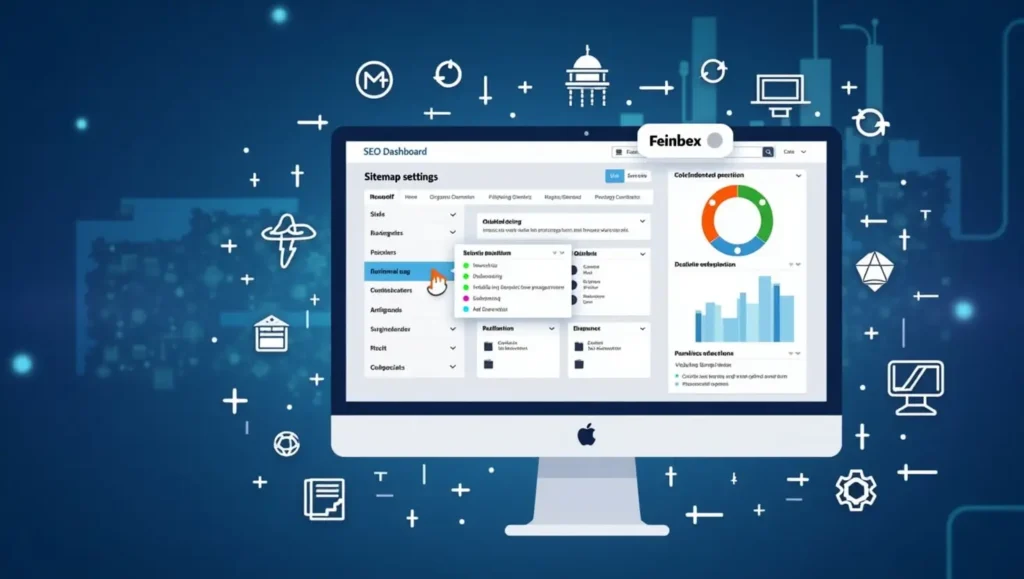The digital landscape is evolving rapidly, and traditional SEO methods are struggling to keep pace with search engine updates, user behavior shifts, and technological advancements. Agile SEO emerges as a scalable, data-driven strategy that allows businesses to respond quickly to changes, optimize continuously, and achieve sustainable growth. This approach aligns with the broader theme of AI-powered SEO tools and agile solutions, as it leverages automation, analytics, and iterative improvements to refine SEO efforts dynamically. To learn more about how AI is transforming SEO, check out 7 Powerful Features of AI-Powered SEO Tools and Their Game-Changing Benefits.
In this blog, we will explore Agile SEO principles, actionable strategies, and real-life examples that demonstrate its effectiveness. We will also discuss how AI-powered tools contribute to Agile SEO and provide practical steps to implement it successfully.
Table of Contents
ToggleWhat is Agile SEO?
Agile SEO is an iterative and flexible approach to search engine optimization that emphasizes:
- Continuous optimization: Regular updates and testing to improve rankings and user experience.
- Data-driven decisions: Using analytics and AI-powered tools to refine strategies.
- Collaboration: Cross-functional teams working together for faster implementation.
- Adaptability: Quickly responding to algorithm updates and market trends.
Unlike traditional SEO, which follows a linear, long-term roadmap, Agile SEO thrives on iterative cycles, quick wins, and ongoing adjustments to maintain competitive rankings. For more on how AI enhances this process, read AI SEO Automation: Top Scaling Solutions to Dominate 2025.
The Evolution of Agile SEO
Traditional SEO focused on static strategies like keyword stuffing, link-building, and occasional content updates. However, with Google’s frequent algorithm changes, businesses needed a more flexible and adaptive approach. Scalable SEO methodologies emerged from Agile development principles, which prioritize responsiveness and efficiency. For insights into how AI is shaping the future of SEO, explore Revolutionizing Technical SEO with AI: 7 Best Practices for 2025.
With an iterative SEO approach, businesses embrace a process that includes research, implementation, monitoring, and refinementt. Instead of waiting months for results, teams continuously test and optimize strategies, ensuring higher visibility and sustained growth.
The Role of AI in Scaling Agile SEO Solutions
Artificial intelligence enhances scalable SEO solutions by automating repetitive tasks, predicting trends, and providing actionable insights. Key AI-driven tools that facilitate dynamic optimization approach include:
- AI Content Optimization: Platforms like Clearscope and SurferSEO analyze top-performing content and suggest keyword improvements in real time.
- Automated Technical SEO Audits: Tools like Screaming Frog and Sitebulb identify site issues quickly, enabling rapid fixes.
- AI-Driven Rank Tracking: Platforms like Semrush and Ahrefs monitor SERP fluctuations and alert marketers to algorithm changes.
- Predictive Analytics: Google’s AI-based tools analyze search trends and user intent, helping brands anticipate future demand. For more on predictive strategies, visit 6 Predictive SEO Strategies Using AI to Dominate Future Rankings.
AI-driven solutions empower marketers to make data-backed decisions, eliminate guesswork, and enhance content relevance, ensuring sustainable SEO growth.

Implementing Agile SEO: Actionable Strategies
1. Adopt a Sprint-Based Workflow
Break down SEO tasks into smaller, iterative sprints (e.g., two-week cycles) to ensure continuous improvements. Each sprint should focus on specific goals, such as:
- Enhancing on-page SEO for high-priority pages.
- Resolving technical issues detected through AI audits.
- Optimizing content for evolving search intent.
An iterative SEO process follows a cyclical process: Plan → Execute → Analyze → Iterate. Teams work collaboratively, regularly evaluating results and adjusting strategies to maintain optimal rankings.
2. Leverage AI for Keyword Research & SERP Analysis
Keyword research is the foundation of SEO success. AI-powered tools like MarketMuse and Frase analyze search trends, user intent, and competitor performance to identify high-ranking keyword opportunities. For deeper automation, businesses can also explore Python for SEO automation to scale their keyword research efforts
Steps to Optimize Keyword Research:
- Use AI tools to discover long-tail and semantic keywords.
- Analyze search intent using Google’s “People Also Ask” and AI-driven insights.
- Continuously update content with trending keywords to align with evolving search behavior.
3. Automate SEO Monitoring & Adjustments
SEO is a long-term effort that requires ongoing monitoring. AI-powered monitoring tools can track keyword rankings, backlinks, and site health continuously.Marketers can use SEO monitor competitor activities and growth techniques to gain an edge over rivals. Set up automated alerts to detect traffic drops or algorithm-induced fluctuations and adjust strategies accordingly.
Automated Monitoring Tools:
- Google Search Console: Identifies indexing and ranking issues.
- Ahrefs & Moz: Tracks keyword rankings and backlink performance.
- SEMrush Site Audit: Provides insights on technical SEO and user experience.
4. Prioritize User Experience (UX) & Core Web Vitals
A data-driven SEO approach goes beyond keyword optimization—it enhances the user experience. Google’s Core Web Vitals have become a crucial ranking factor, emphasizing page speed, interactivity, and visual stability.
Steps to Improve UX & Core Web Vitals:
- Optimize Page Speed: Minimize JavaScript, use lazy loading, and implement a content delivery network (CDN).
- Improve Mobile Friendliness: Use Google’s Mobile-Friendly Test to ensure a seamless mobile experience.
- Enhance Navigation & Accessibility: Ensure intuitive site architecture, clear CTAs, and minimal pop-ups.
By optimizing UX, businesses can increase engagement, reduce bounce rates, and improve SEO performance.
5. Continuously Test & Optimize Content
Agile SEO thrives on data-driven decisions. Implement A/B testing to experiment with title tags, meta descriptions, and content formats. AI tools like Grammarly and Hemingway can refine readability and engagement, improving dwell time and click-through rates.
Content Optimization Strategies:
- Use heatmaps and user behavior analytics (Hotjar, Crazy Egg) to refine content layout.
- Regularly update old content with new data, keywords, and visuals.
- Monitor engagement metrics (time on page, bounce rate) to adjust content accordingly.
6. Build a Scalable Link-Building Strategy
Link-building remains a critical factor in SEO success. An iterative link-building approach emphasizes quality over quantity, focusing on authoritative and relevant backlinks. If you’re optimizing for local markets, local SEO services gravitate can help improve local search rankings.
Link-Building Tactics:
- Leverage AI to identify link-building opportunities.
- Use HARO (Help a Reporter Out) for high-quality backlinks.
- Create shareable content like infographics and research-based reports.

Real-Life Example: Agile SEO in Action
A leading e-commerce brand struggling with declining organic traffic adopted a flexible SEO strategy. By leveraging AI-powered tools for real-time keyword optimization and automating technical audits, they achieved:
- A 30% increase in organic traffic within three months.
- A 20% improvement in conversion rates by optimizing high-intent keywords.
- Faster recovery from Google algorithm updates through adaptive, data-driven strategies.
This success story illustrates how Agile SEO enables businesses to stay ahead of search trends, improve content relevance, and enhance user experience for long-term growth.
Conclusion
Agile SEO is a game-changing strategy that enables brands to stay ahead in an ever-changing digital environment. By integrating AI-powered tools, adopting an iterative approach, and prioritizing continuous optimization, businesses can scale their SEO efforts efficiently.Discover the best tools for scaling SEO with AI and Agile strategies to stay ahead in 2025
Key Takeaways:
- An adaptive SEO strategy emphasizes flexibility, iterative improvements, and data-driven decisions.
- AI-powered tools streamline keyword research, content optimization, and SEO monitoring.
- A sprint-based approach ensures faster implementation and improved adaptability.
- Prioritizing user experience boosts rankings and engagement metrics.
- Continuous testing and refinement are essential for long-term SEO success.
Are you ready to embrace Agile SEO and revolutionize your digital growth strategy? Start small with sprint-based optimizations and AI-driven insights, and watch your rankings soar!
FAQs
What is Agile SEO, and how does it differ from traditional SEO?
Agile SEO is a flexible, iterative approach that adapts quickly to search engine updates, focusing on continuous optimization and AI-driven strategies.
Why is Agile SEO important for businesses in 2025?
With rapid algorithm changes and evolving user behavior, Agile SEO helps businesses stay competitive by allowing real-time adjustments and scalable growth.
How do AI-powered tools enhance Agile SEO strategies?
AI-driven tools automate keyword research, content optimization, and competitor analysis, making Agile SEO more efficient and data-driven.
What are some key Agile SEO strategies for rapid growth?
Key strategies include AI-driven content optimization, real-time SEO monitoring, technical SEO automation, and iterative content updates.
How can businesses implement Agile SEO effectively?
Businesses can implement Agile SEO by using automation tools, setting up sprint-based SEO workflows, analyzing data frequently, and making quick adjustments.
What are the biggest challenges of Agile SEO, and how can they be overcome?
The biggest challenges include managing constant updates and data overload. Businesses can overcome them by leveraging AI insights and structured workflows.



